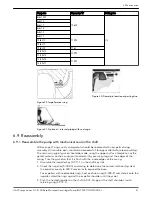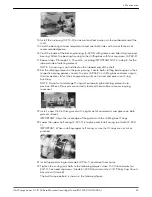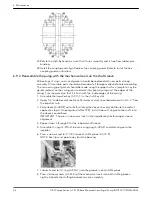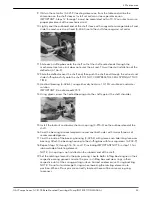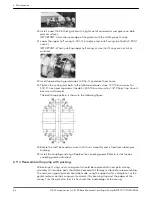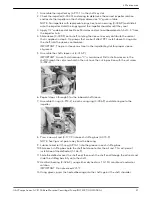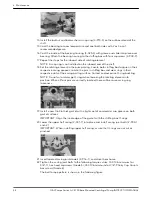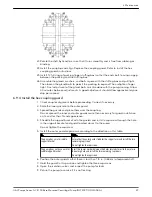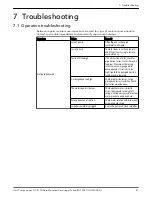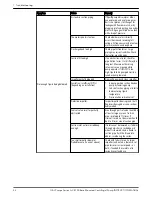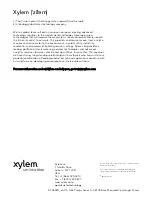
Symptom
Cause
Remedy
Suction inlet not immersed enough. If inlet cannot be lowered, or if eddies
through which air is sucked persist
when it is lowered, chain a board to
suction pipe. It will be drawn into
eddies, smothering the vortex.
Liquid heavier (in either viscosity or
specific gravity) than allowed for.
Use larger driver. Consult factory for
recommended size. Test liquid for
viscosity and specific gravity.
Wrong direction of rotation.
Check motor rotation with directional
arrow on pump casing.
Casing distorted by excessive strains
from suction or discharge piping.
Check alignment. Examine pump for
friction between impeller and casing.
Replace damaged parts.
Shaft bent due to damage — through
shipment, operation, or overhaul.
Check deflection of rotor by turning
on bearing journals. Total indicator
run-out should not exceed 0.002 on
shaft and 0.004 on impeller wearing
surface.
Mechanical failure of critical pump
parts.
Check bearings and impeller for
damage. Any irregularity in these
parts will cause a drag on shaft.
Misalignment
Realign pump and driver.
Speed may be too high (brake hp of
pump varies as the cube of the speed;
therefore, any increase in speed
means considerable increase in
power demand).
Check voltage on motor.
Electrical defects.
The voltage and frequency of the
electrical current may be lower than
that for which the motor was built; or
there may be defects in motor. The
motor may not be ventilated properly
due to poor location.
Mechanical defects in turbine, engine
or other type of drive exclusive of
motor.
If trouble cannot be located, consult
factory.
7 Troubleshooting
54
G&L Pumps Series A-C 8100 Base Mounted Centrifugal Pump INSTRUCTION MANUAL


